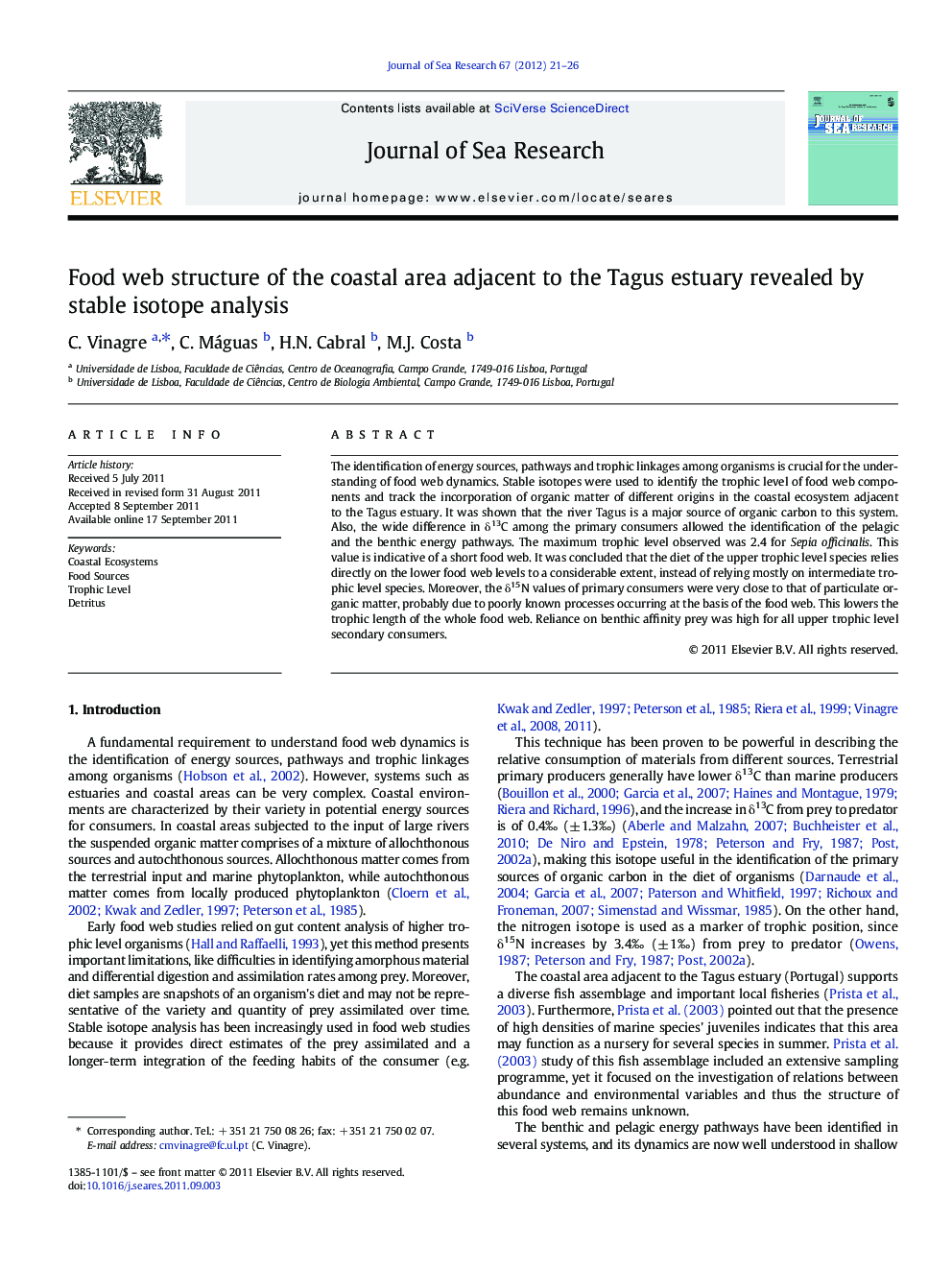| Article ID | Journal | Published Year | Pages | File Type |
|---|---|---|---|---|
| 4550099 | Journal of Sea Research | 2012 | 6 Pages |
The identification of energy sources, pathways and trophic linkages among organisms is crucial for the understanding of food web dynamics. Stable isotopes were used to identify the trophic level of food web components and track the incorporation of organic matter of different origins in the coastal ecosystem adjacent to the Tagus estuary. It was shown that the river Tagus is a major source of organic carbon to this system. Also, the wide difference in δ13C among the primary consumers allowed the identification of the pelagic and the benthic energy pathways. The maximum trophic level observed was 2.4 for Sepia officinalis. This value is indicative of a short food web. It was concluded that the diet of the upper trophic level species relies directly on the lower food web levels to a considerable extent, instead of relying mostly on intermediate trophic level species. Moreover, the δ15N values of primary consumers were very close to that of particulate organic matter, probably due to poorly known processes occurring at the basis of the food web. This lowers the trophic length of the whole food web. Reliance on benthic affinity prey was high for all upper trophic level secondary consumers.
► The river Tagus is a major source of organic carbon to this system. ► The pelagic and the benthic energy pathways were identified. ► The maximum trophic level observed was 2.4 for Sepia officinalis. ► Diet of the upper trophic level relies heavily on low food web levels. ► Reliance on benthic affinity prey was high for all upper trophic level consumers.
